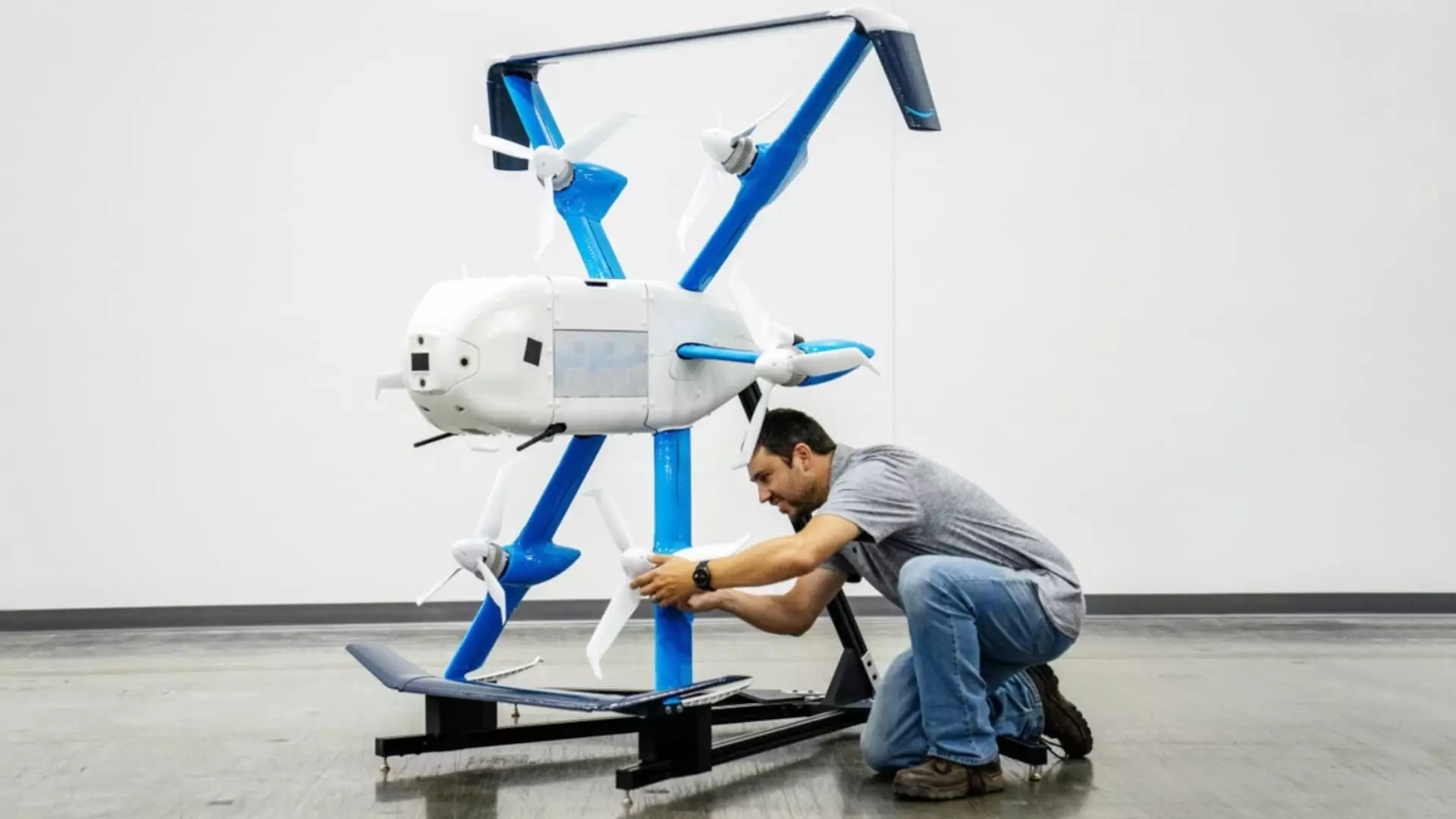In recent developments, Amazon has achieved a significant milestone by securing regulatory approval for its MK30 delivery drone. This smaller and quieter model represents a critical advancement in Amazon’s long-standing ambition to establish a robust drone delivery service. First introduced in November 2022, the MK30 is designed to operate in conditions that would impede earlier models, such as light rain, and boasts double the range of its predecessors. The Federal Aviation Administration (FAA)’s approval not only allows Amazon to deploy these drones over extended distances but also facilitates flights that exceed the visual line of sight of operators. This breakthrough is crucial as it brings the visionary world of drone deliveries closer to reality, positioning Amazon as a front-runner in the aerial logistics space.
In tandem with receiving the necessary regulatory green light, Amazon has begun rolling out drone deliveries in the vicinity of Phoenix, Arizona. This pilot program is taking place near the company’s Tolleson warehouse, marking a pivotal moment in the integration of drone technology into Amazon’s existing supply chain. Previously, Amazon had to halt operations in Lockeford, California, and refocus efforts in Arizona, which illustrates the company’s adaptability in navigating the complexities of logistic operations and regulatory landscapes. The FAA spokesperson confirmed that as of October 31, the agency is permitting beyond-visual-line-of-sight deliveries in Tolleson, which should expand Amazon’s logistical capabilities significantly.
Despite the progress achieved, the road to establishing a successful drone delivery service has been fraught with challenges. Amazon founder Jeff Bezos initially envisioned a functioning drone delivery system within five years of its announcement over a decade ago. However, the reality of the situation has proven to be a test of patience and strategic pivoting for the company, which has poured billions into the Prime Air initiative. Slow progress has been coupled with regulatory hurdles and operational realignments that have hindered timely advancements, leading to layoffs and a loss of key leadership figures in the process. In a bid to steer the ship, Amazon appointed former Boeing executive David Carbon as the new head of the drone program, an effort to revitalize the ambitious project.
As Amazon strides toward creating its drone delivery network, public acceptance remains a pertinent issue. Residents in areas designated as trial locations have expressed concerns, particularly regarding noise levels generated by the drones. Such feedback prompted intervention from local government officials, like the mayor of College Station, who corresponded with the FAA to convey these community apprehensions. Responding to this public sentiment, Amazon has committed to reassessing its operational sites by 2025 in hopes of mitigating community disruption and enhancing acceptance of drone deliveries. Building a harmonious relationship with residents is essential for Amazon, as it can significantly influence the program’s success moving forward.
The landscape for drone delivery is becoming increasingly competitive, with notable players like Wing (a subsidiary of Alphabet), UPS, and Walmart emerging alongside smaller startups like Zipline and Matternet. Amazon’s concerted efforts to refine its drone technology and navigate regulatory challenges effectively are viewed by many as pivotal not only for its own corporate future but also for the entire aerial delivery market’s evolution. As drone delivery becomes more commonplace, the emphasis will shift towards finding the right balance between efficiency, community acceptance, and regulatory compliance.
Amazon’s venture into the drone delivery domain is a fascinating blend of innovation, regulatory challenges, and community dynamics. As the company embarks on this new phase with its MK30 drones, it calls into question how future delivery logistics will be structured. Will the sky be the limit for Amazon’s ambitions, or will grounded realities shape its journey? The unfolding narrative of drone delivery isn’t merely about technological advancement; it’s a reflection of how businesses can navigate complex landscapes while addressing the thoughts and feelings of the communities they aim to serve.


Leave a Reply
You must be logged in to post a comment.